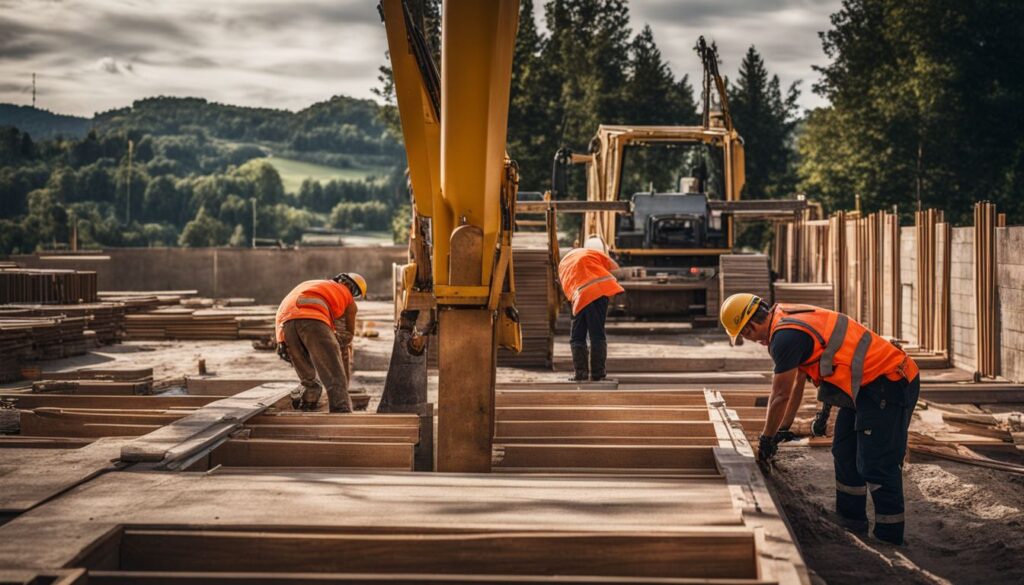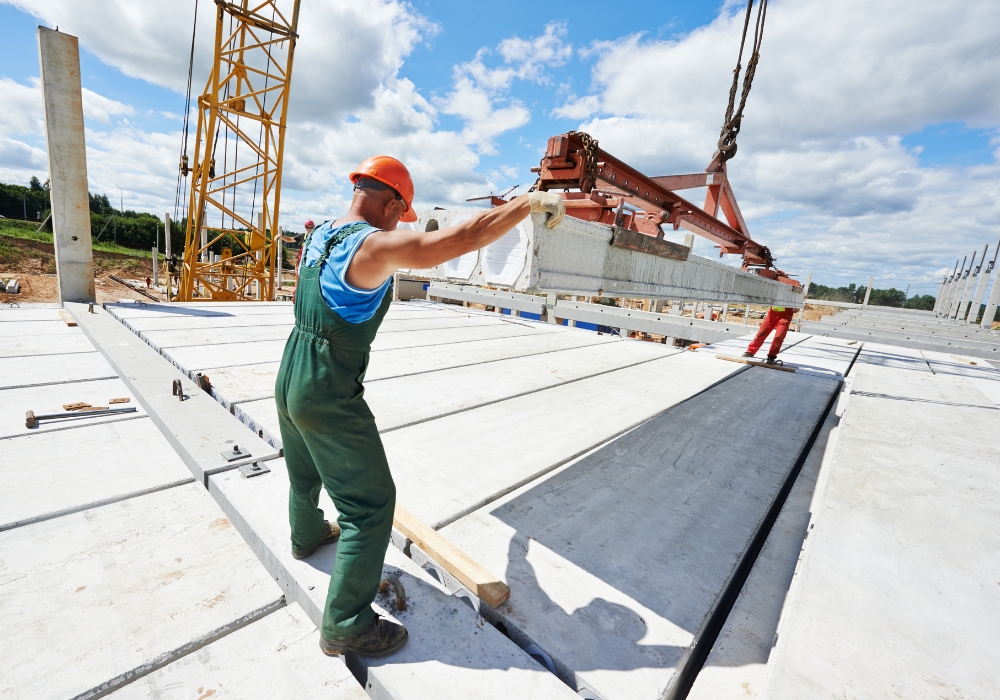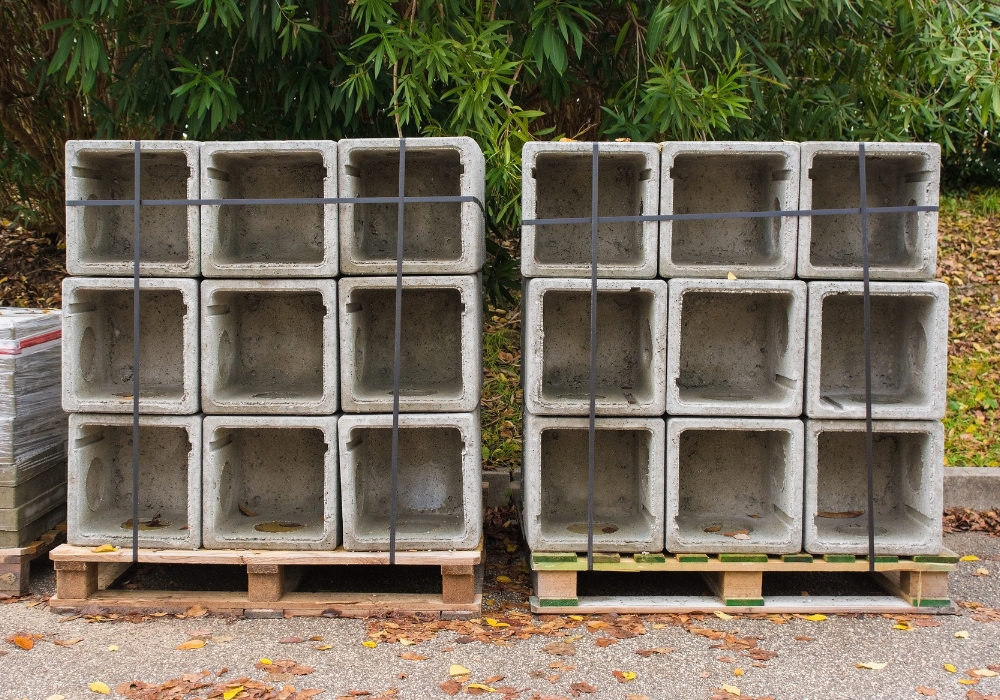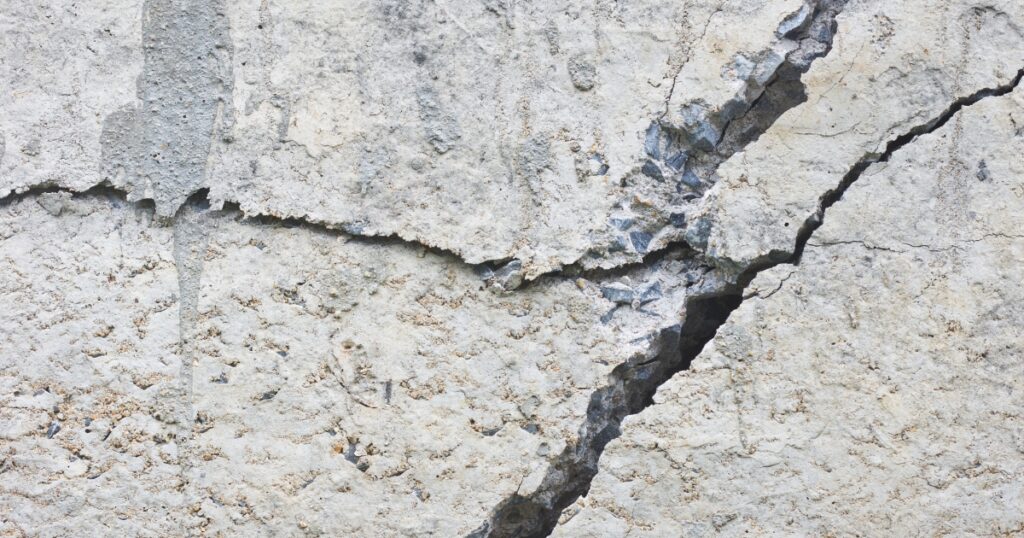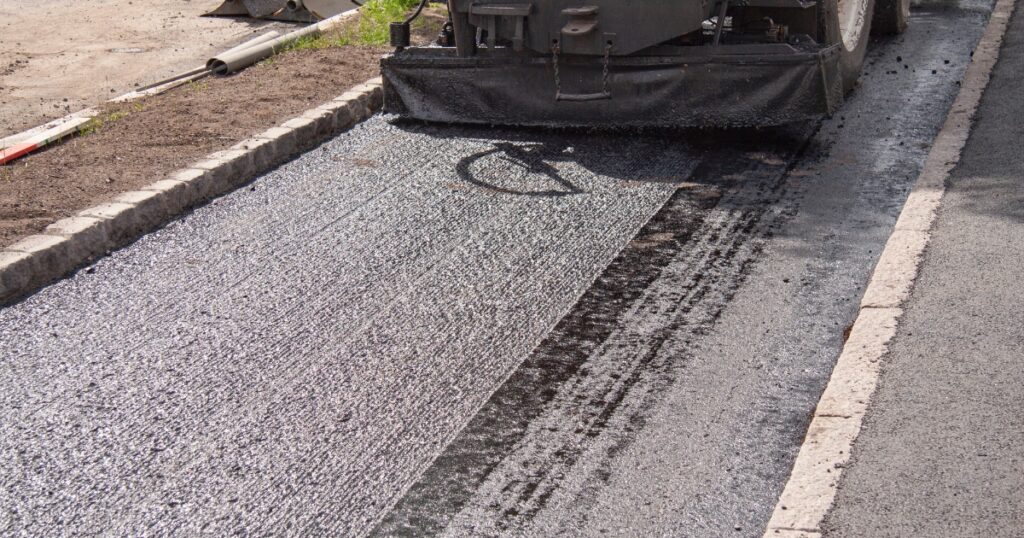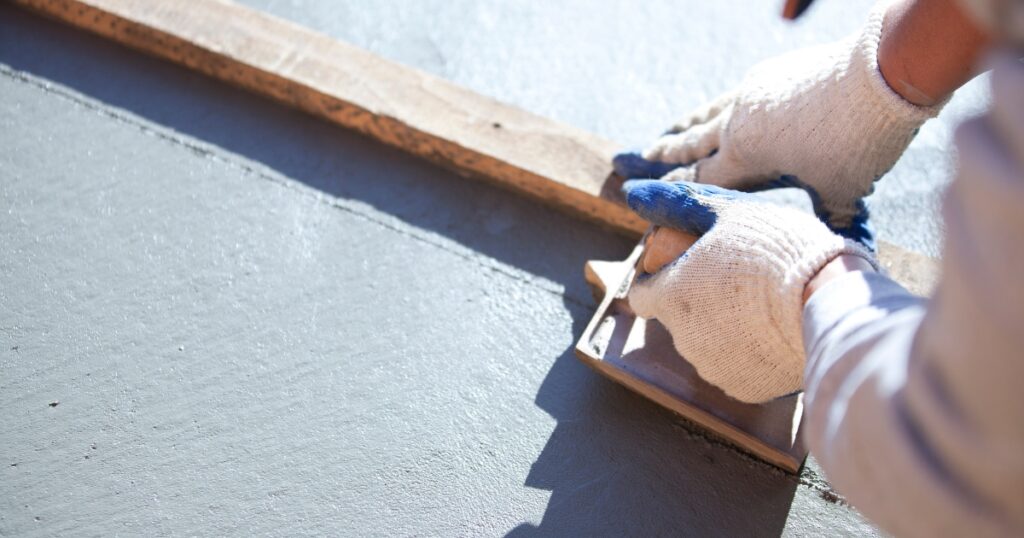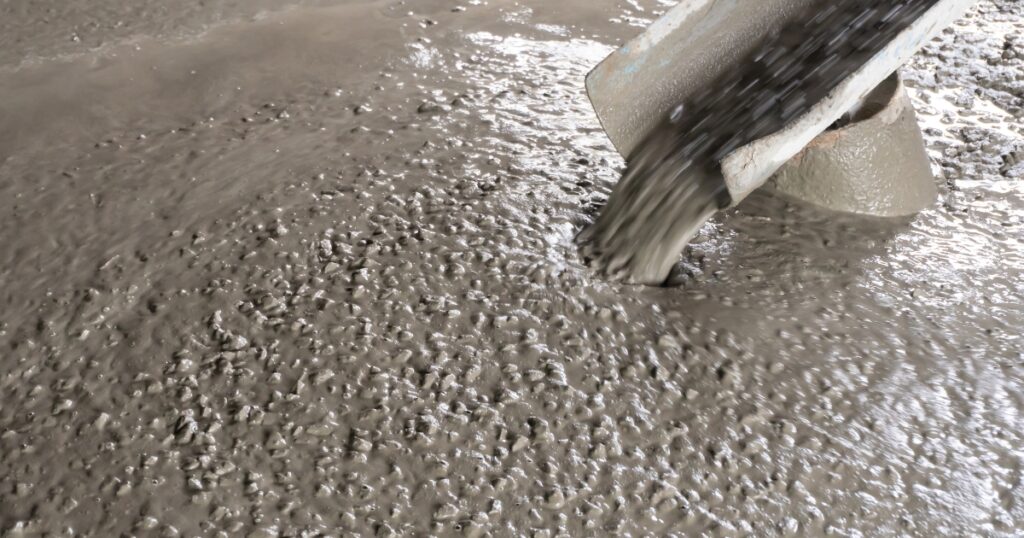
Striking the perfect balance in modern architecture can be a bit of a sticky wicket. We’ve all been around the block a time or two, trying to figure out how to marry design with functionality without missing a beat.
Ever wondered about the unsung hero behind our buildings’ shapes? Our article dives into formwork and its crucial role in lifting both engineering and architectural practices up a notch, packed with handy tips for anyone interested.
Stick around; it’s about to get real interesting!
Understanding Formwork in Construction
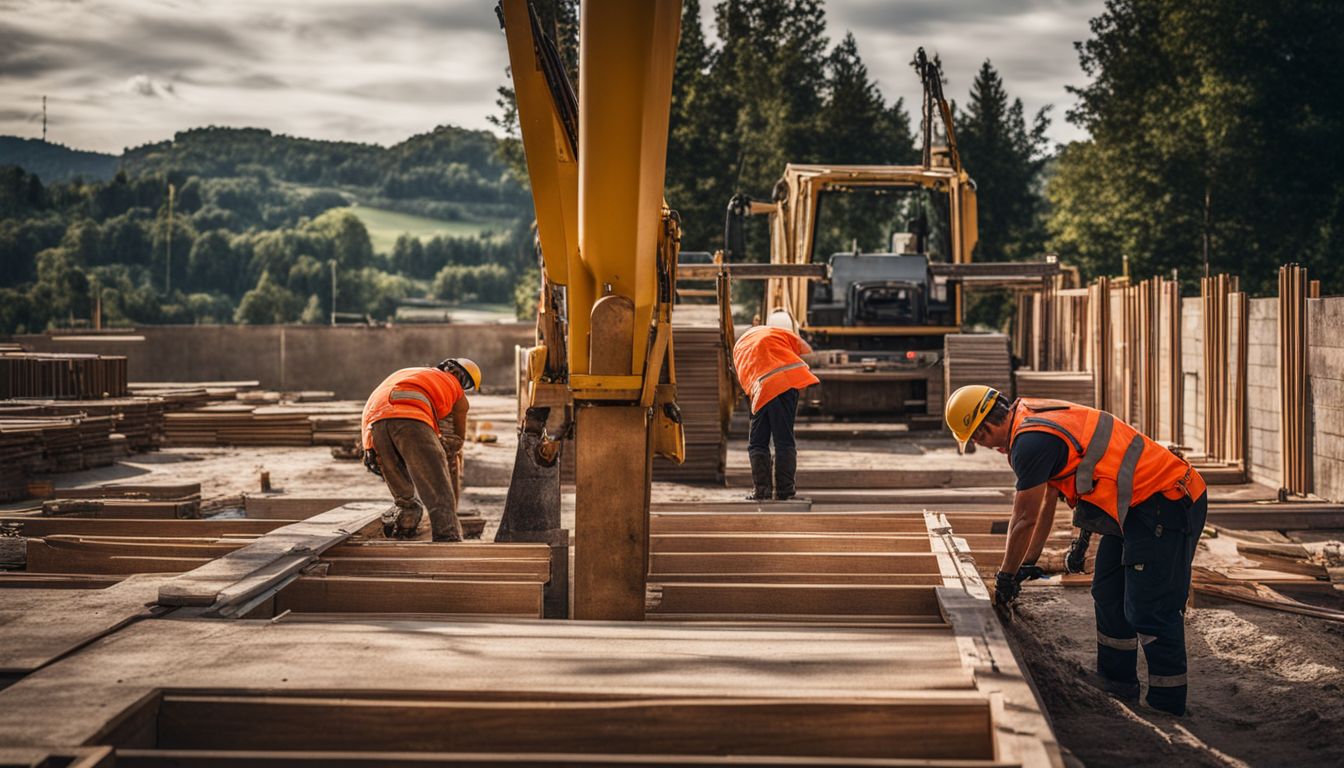
Formwork in construction involves creating temporary structures to support concrete until it sets. It plays a significant role in ensuring the accuracy and strength of the final structure.
Definition and Types of Formwork
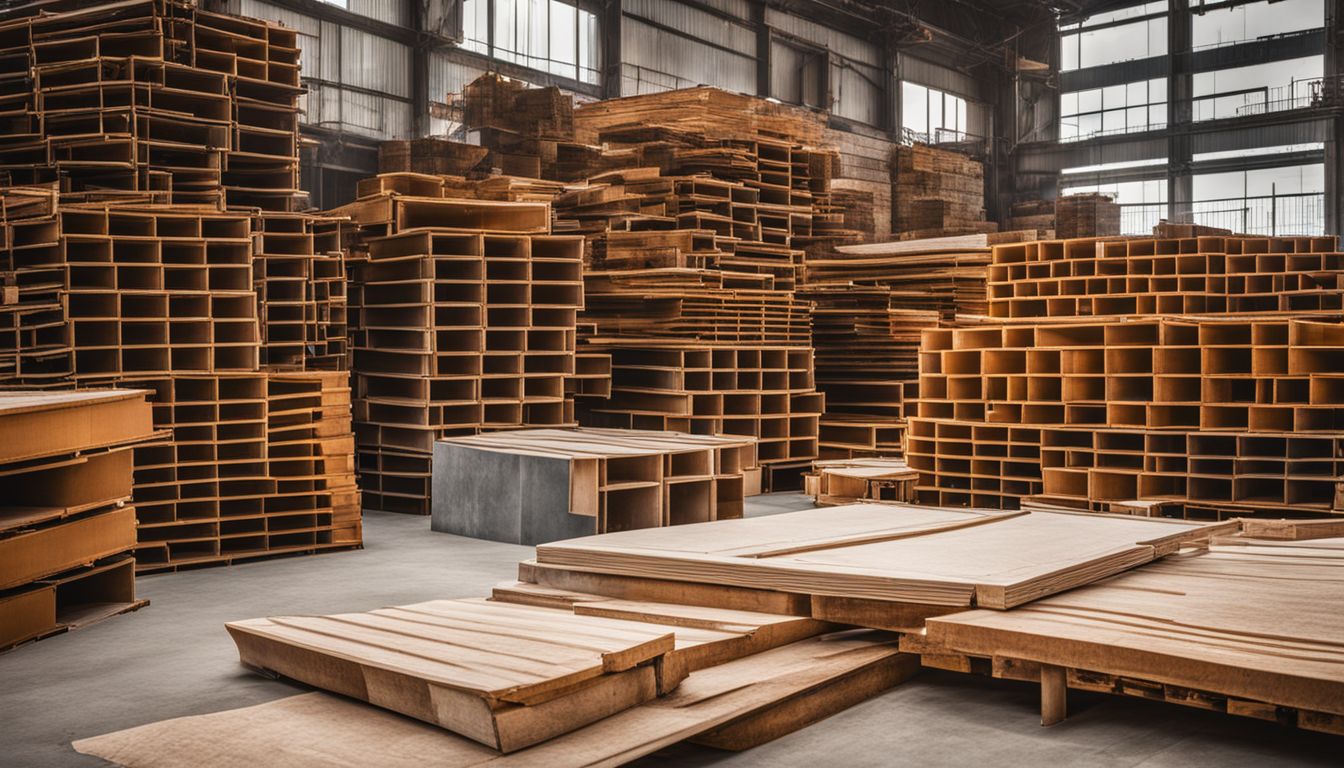
Formwork is a crucial part of construction, acting as a mould for concrete until it hardens and can support itself. We use different materials such as timber, steel, aluminium, and plastic to make formworks.
Each type has its unique advantages depending on the project’s needs—timber being cost-effective for small projects while steel offers more strength for complex structures.
Formwork shapes our buildings, defining geometry and ensuring stability.
We categorise formworks into two main types: temporary and permanent. Temporary formwork is removed after the concrete sets, whereas permanent stays in place, becoming part of the structure.
This division helps us choose the right approach whether we’re building straightforward residential homes or intricate architectural designs demanding precise forms and enduring frameworks.
Importance of Formwork in Construction Projects
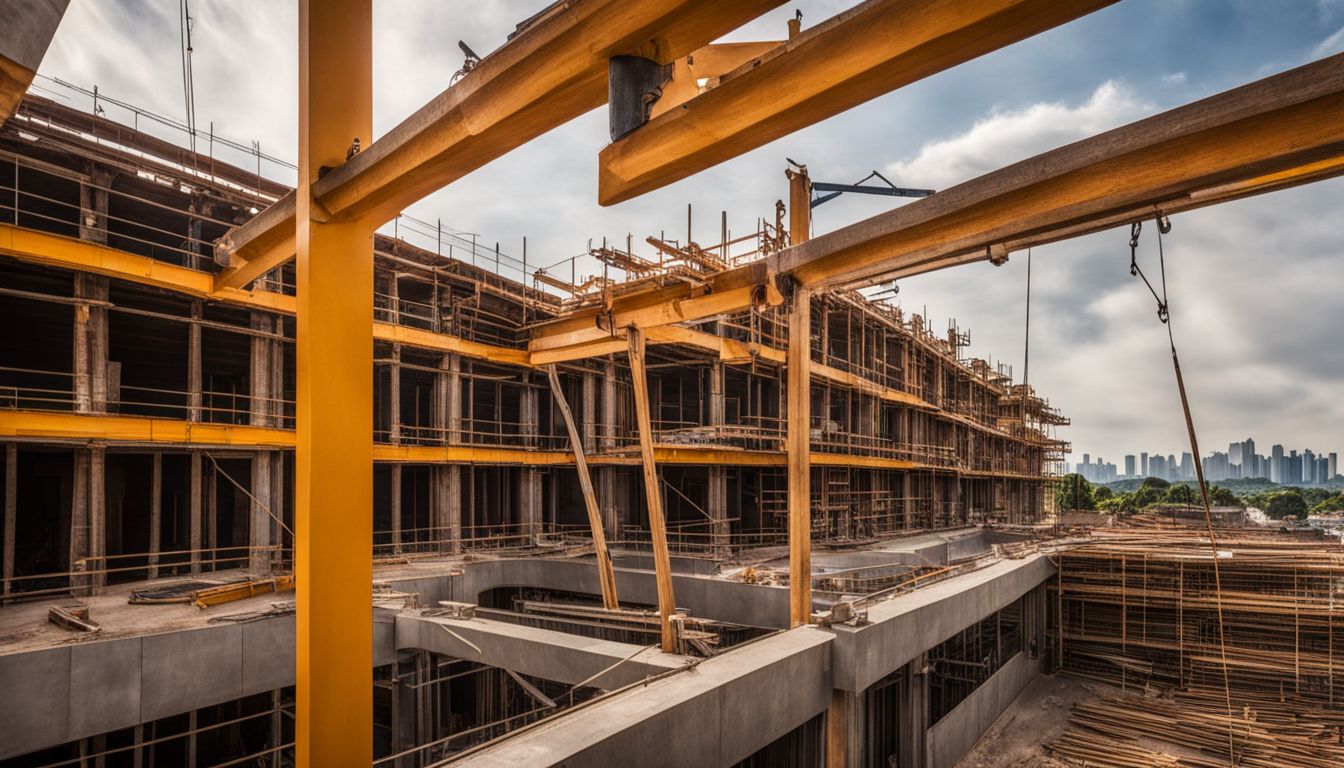
We understand the critical role formwork plays in construction projects. It shapes the concrete, supporting it until it hardens and becomes strong enough to support itself. This process is essential for creating buildings, bridges, and other structures with precision and durability.
Our experience reveals that choosing the right formwork impacts both the speed of construction and the quality of the finished structure. High-quality formwork ensures smooth surfaces and precise dimensions, reducing the need for corrections and additional finishing work.
We always prioritise using effective formwork solutions to enhance efficiency, safety, and structural integrity in our projects.
Formwork Design
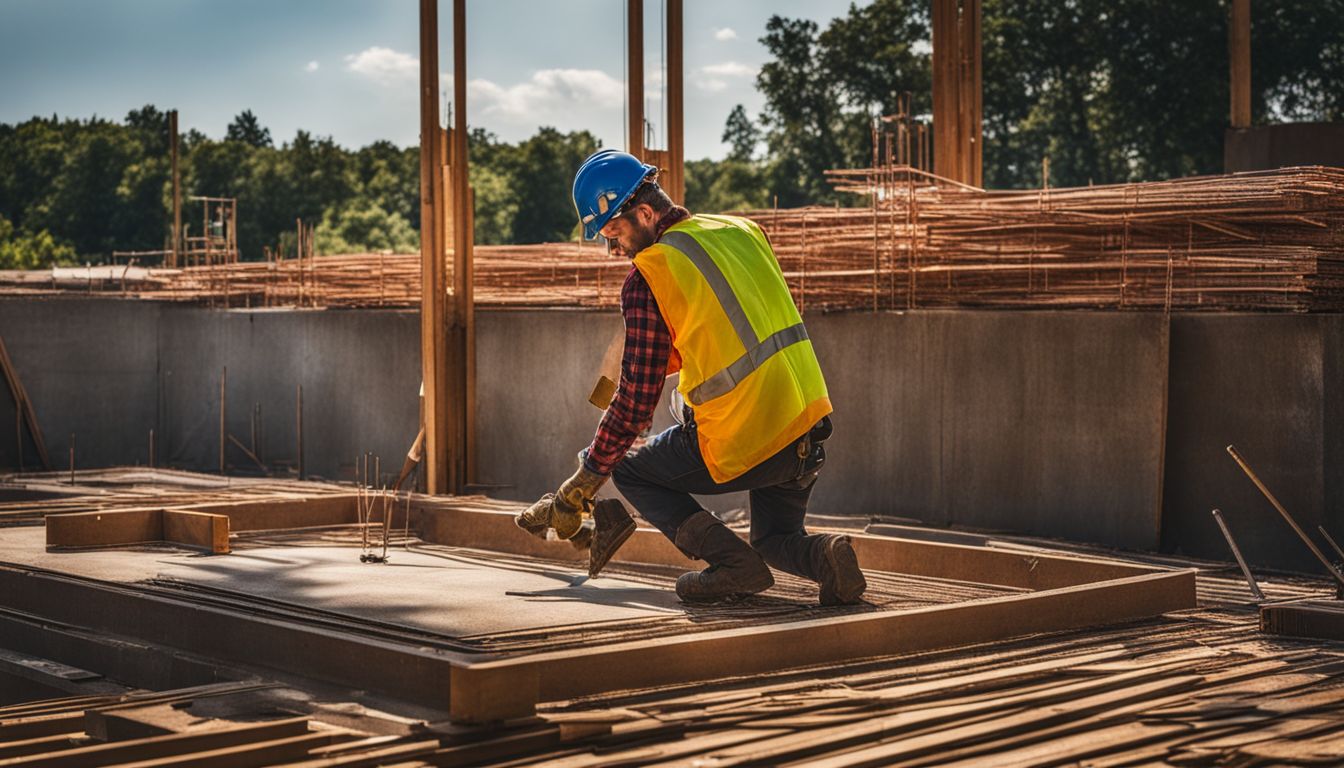
Formwork design plays a crucial role in ensuring the structural integrity of concrete construction. Structural engineers meticulously consider various factors to tailor formwork towards specific building techniques and construction materials.
Engineering Considerations in Formwork Design
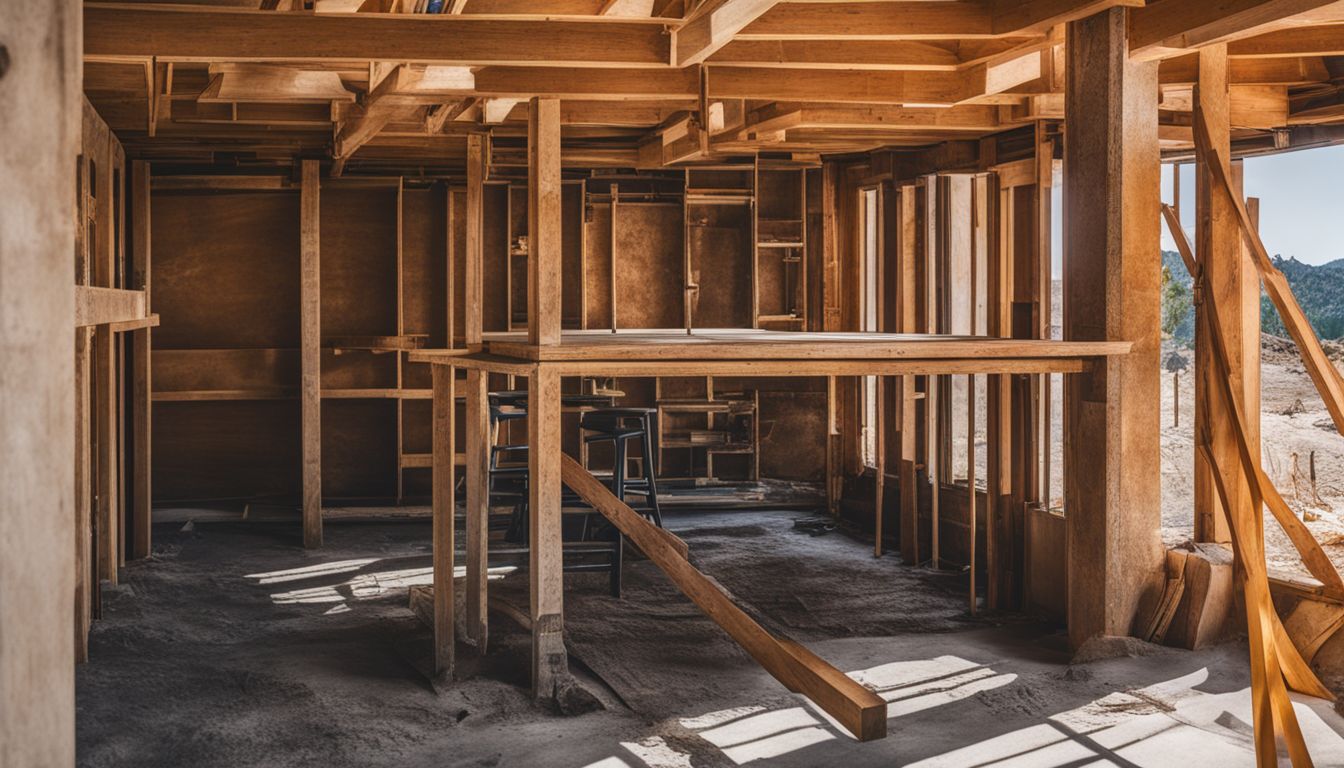
We pay close attention to the structural integrity of formwork systems in our designs. This means we make sure that the frameworks we create can support both the weight of the wet concrete and any additional loads without failing.
Our team focuses on selecting materials that not only match the project’s budget but also its sustainability goals, ensuring a balance between cost-efficiency and eco-friendliness.
Safety is another crucial aspect we never overlook. We design our formwork to protect workers from potential hazards by incorporating features like secure access points and strong guardrails.
This focus extends to how easily our formwork can be assembled and dismantled, aiming for efficiency in construction times while maintaining a safe environment for everyone involved.
The Role of Structural Engineering in Formwork
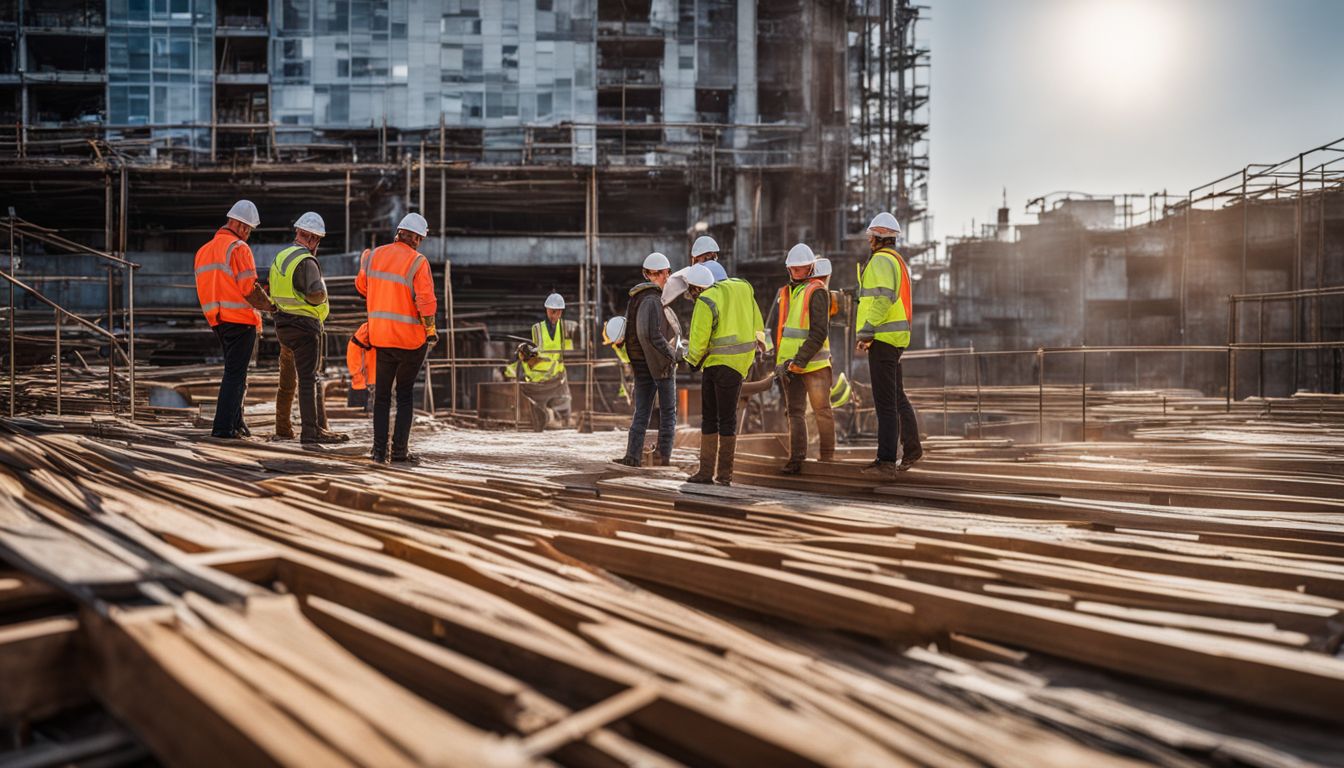
Structural engineers play a crucial role in the planning and construction of formwork. They ensure the structures can support themselves and remain safe while concrete is being poured and cured.
Their expertise allows them to calculate loads, stresses, and pressures accurately. This keeps buildings stable during construction, preventing accidents and ensuring durability.
They also innovate solutions for complex designs in modern architecture. Working closely with architects, structural engineers adapt formwork to realise unique shapes and geometries in buildings.
This collaboration transforms creative visions into tangible structures that meet both aesthetic and safety standards. Crafting these solutions requires a deep understanding of material properties and construction techniques, highlighting the importance of structural engineering in elevating architectural design through formwork.
The Interplay of Formwork and Modern Architecture

Formwork plays a crucial role in shaping the modern architectural landscape. It influences the design and execution of buildings, enabling innovative and daring structural solutions to come to life.
Modern architecture takes formwork expertise into account to push the boundaries of what’s possible in construction and design.
How Formwork Influences Architectural Design
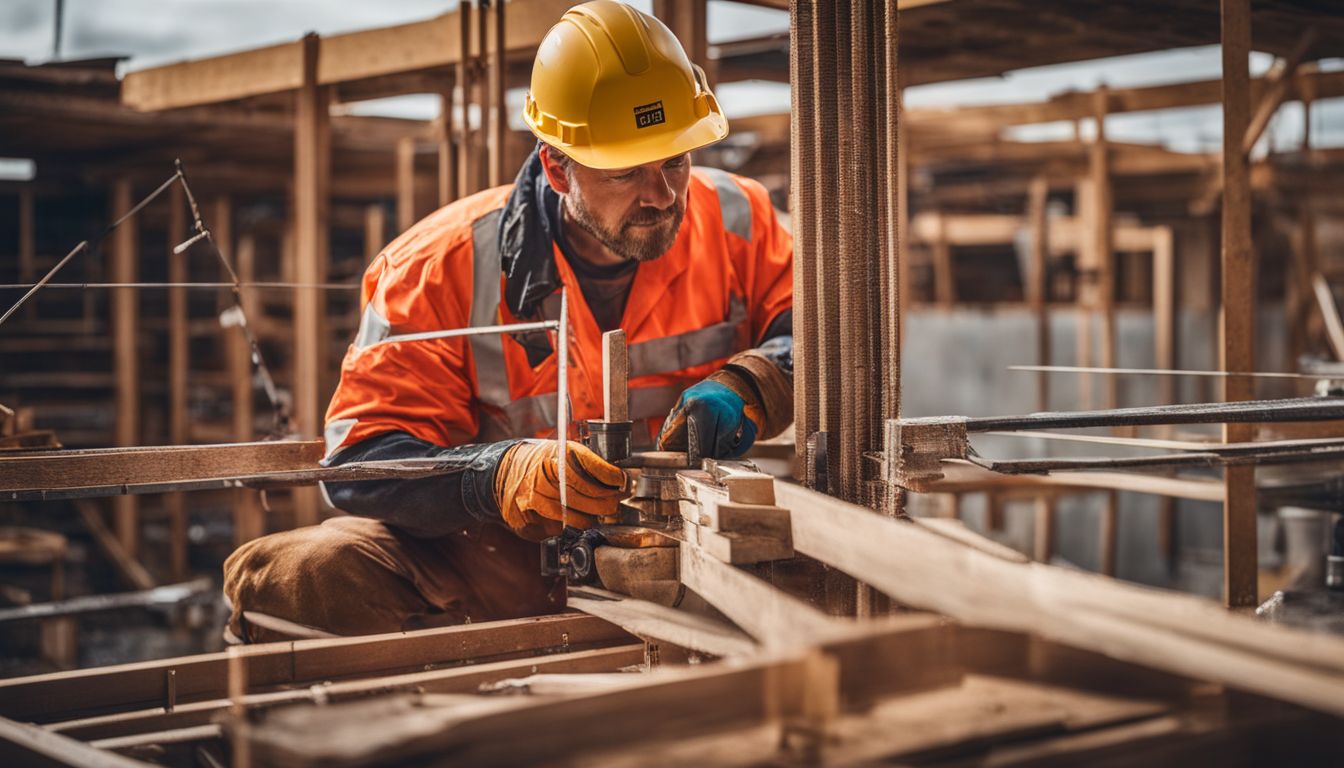
Formwork plays a critical role in shaping the physical structure of modern buildings, allowing architects to push the boundaries of creativity and design. Its influence extends beyond mere functionality; it empowers designers to create complex shapes and innovative spaces that were once thought impossible.
Through precise engineering, formwork transforms concrete into dynamic forms, making fluid designs and futuristic aesthetics achievable. This synergy between formwork technology and architectural vision brings to life structures that stand out for their uniqueness and artistic expression.
In the intersection of architecture and construction, formwork is the unsung hero that turns visionary designs into tangible realities.
Exploring examples of modern architectural designs utilising formwork will further illuminate how this technology has become indispensable in bringing contemporary building concepts to fruition.
Examples of Modern Architectural Designs Utilising Formwork

Formwork shapes the world of modern architecture by creating structures that were once thought impossible. Its role in construction technology helps architects and engineers bring their visionary designs to life, blending functionality with striking aesthetics.
- The Lotus Building in China stands as a testament to the power of innovative formwork. This building mimics the shape of a blooming lotus flower, achieved through complex geometric formwork that allowed concrete to be moulded into soft, flowing curves rather than traditional straight lines.
- Sydney Opera House, an iconic symbol of architectural ingenuity, owes its unique silhouette to advanced formwork solutions. The roof’s shell-like structures were constructed using detailed formwork designs, enabling this masterpiece of modern architecture to combine exceptional beauty with structural integrity.
- Calgary’s Peace Bridge showcases how formwork contributes to creating functional yet visually appealing structures in public spaces. The tubular design required precise formwork to create a seamless helical steel structure, proving that engineering and art could walk hand in hand.
- Bosco Verticale in Milan illustrates the role of formwork in integrating nature with urban living. This vertical forest uses specially designed formworks for its balconies, allowing trees and plants to grow at dizzying heights – a green solution for housing development within dense urban areas.
- Marina Bay Sands in Singapore demonstrates the versatility of formwork in high-rise construction. To achieve its distinctive three-towered design capped by a unique sky park, builders relied on customised formwork systems capable of supporting both the weight and complexity of this architectural marvel.
- The Guggenheim Museum Bilbao uses freeform concrete surfaces to challenge traditional museum designs, made possible by sophisticated formworks that sculpted its titanium-clad structure into fluid shapes and volumes – redefining structural design through the use of groundbreaking building techniques.
These examples underscore how essential formwork is in pushing the boundaries of modern architecture and construction technology. Through meticulous planning and design, engineers and architects continue to innovate, paving the way for future wonders in sustainable architecture and highrise buildings around the globe.
Formwork in High-Rise Construction
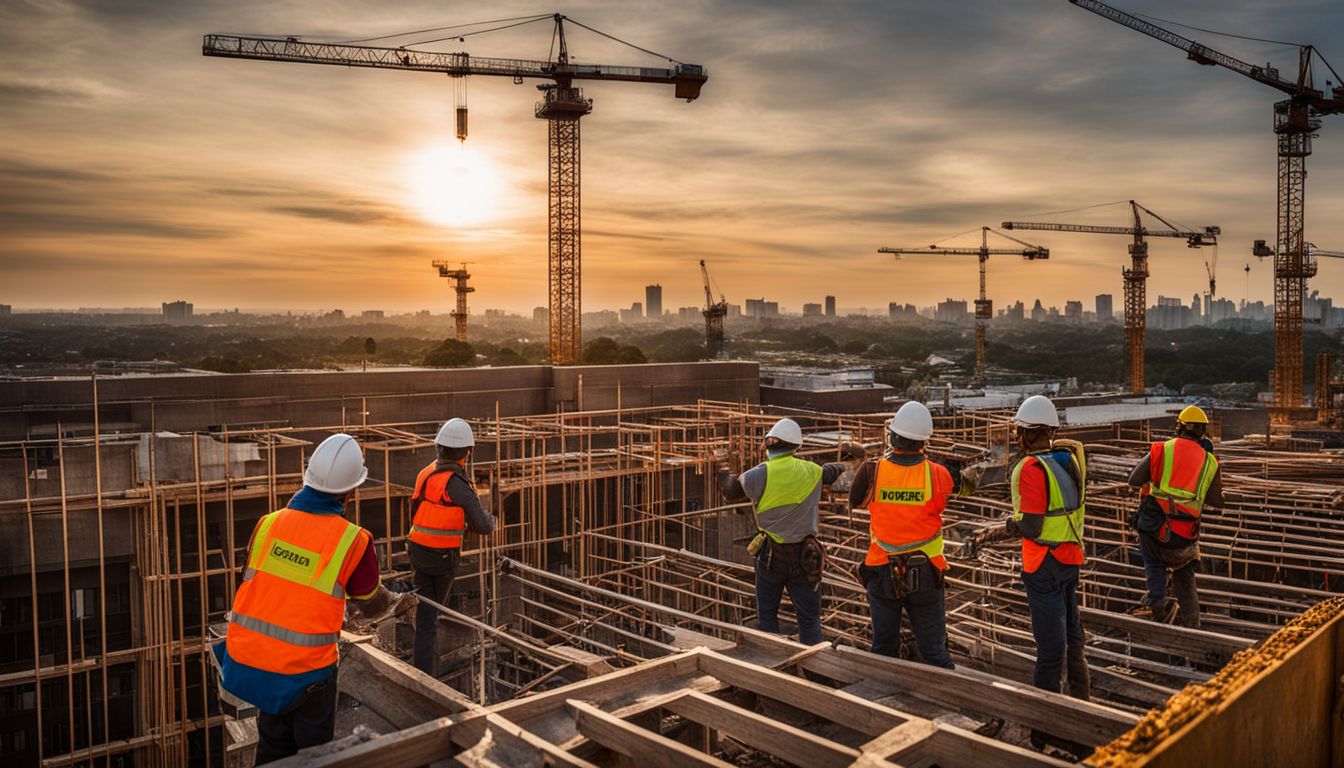
Formwork systems play a crucial role in high-rise construction projects, supporting the concrete during placement and providing structural support until it achieves its required strength.
Engineers ensure that formwork systems are designed to withstand the complex forces associated with tall structures, ensuring safety and stability throughout the construction process.
Role of Formwork Systems in High-Rise Construction
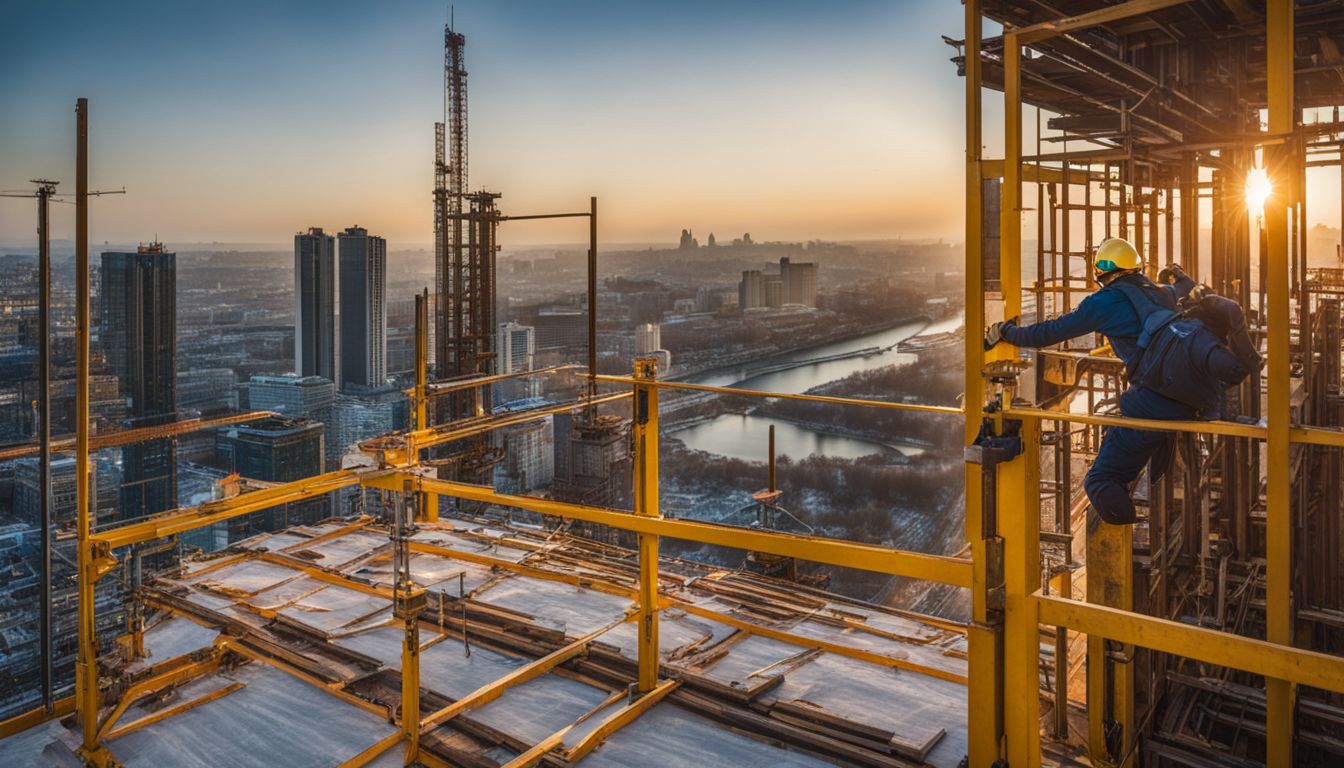
In high-rise construction, formwork systems play a crucial role in defining the skyline of our cities. These structures serve as molds into which concrete is poured, shaping the towering buildings that define urban landscapes.
We understand that for both business owners and homeowners, recognising the importance of formwork systems means acknowledging their part in creating durable and aesthetically pleasing buildings.
They are not just about functionality but also contribute to the architectural beauty and strength of high-rises.
We ensure these systems meet the highest standards of safety and efficiency, catering to complex geometries and designs seen in modern architecture. The adaptability of formwork technologies allows us to push boundaries in building construction, enabling architects to realise more innovative designs.
This process highlights the symbiotic relationship between engineering prowess and architectural vision, leading to landmarks that stand testament to human ingenuity in construction technology.
Case Studies of High-Rise Construction Projects, including Navigating Complex Builds: Maitland’s Formwork Expertise at Work
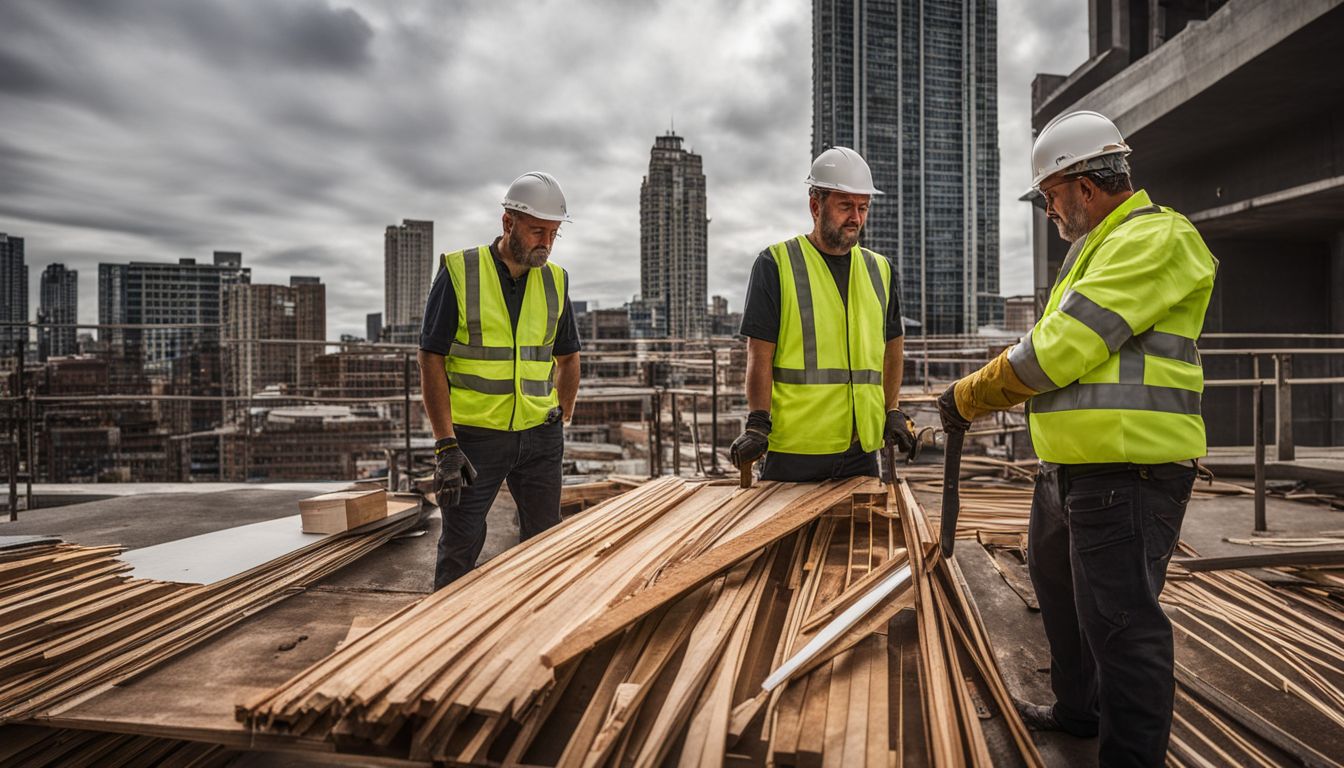
Navigating complex builds demands meticulous planning and expertise, especially in high-rise construction. When it comes to high-rise projects, the challenges are unique and demand tailored solutions. Maitland has successfully navigated these complexities with their bespoke formwork solutions. Here’s a closer look at how Maitland’s expertise has underpinned the success of several high-rise construction projects:
- Maitland’s innovative formwork systems have been pivotal in the construction of iconic high – rise buildings. These systems not only enhance efficiency but also ensure structural integrity.
- Their sustainable formwork practices align with modern architectural and construction trends, aiming towards environmentally friendly outcomes.
- By incorporating advanced technological advancements, Maitland has unlocked the secrets to enhancing productivity while maintaining robust safety standards.
- The seamless integration of formwork into architectural designs reflects dedication towards achieving striking yet functional building aesthetics.
- Their collaborative approach with architects and engineers ensures that formwork complements the overall vision of the project, adding value at every stage.
Maitland’s formwork prowess exemplifies how innovation and expertise can shape the landscape of high-rise construction, offering insights for future projects in this ever-evolving realm of architecture and engineering.
Innovative Formwork Systems for Modern Concrete Construction
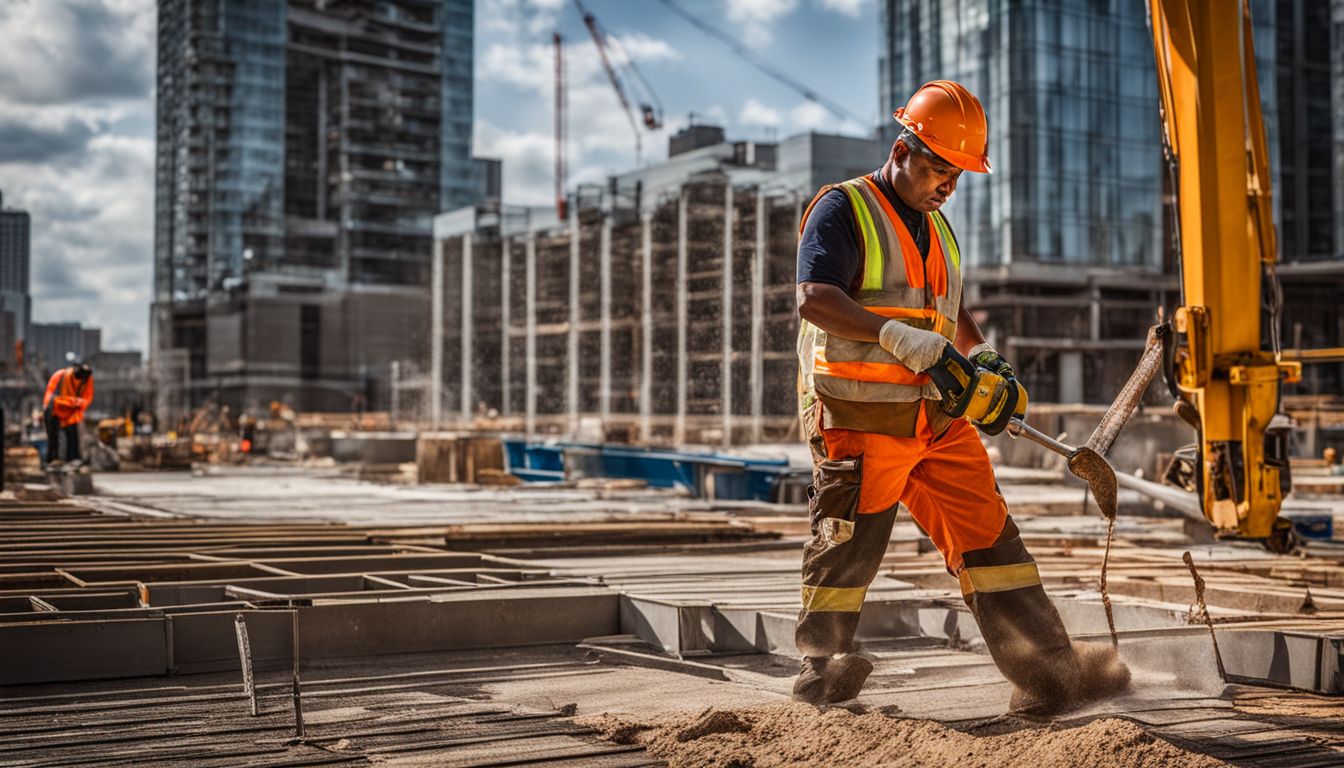
Innovative formwork systems revolutionise modern concrete construction. These advanced systems offer significant benefits and face unique challenges in construction projects.
Overview of Advanced Formwork Systems
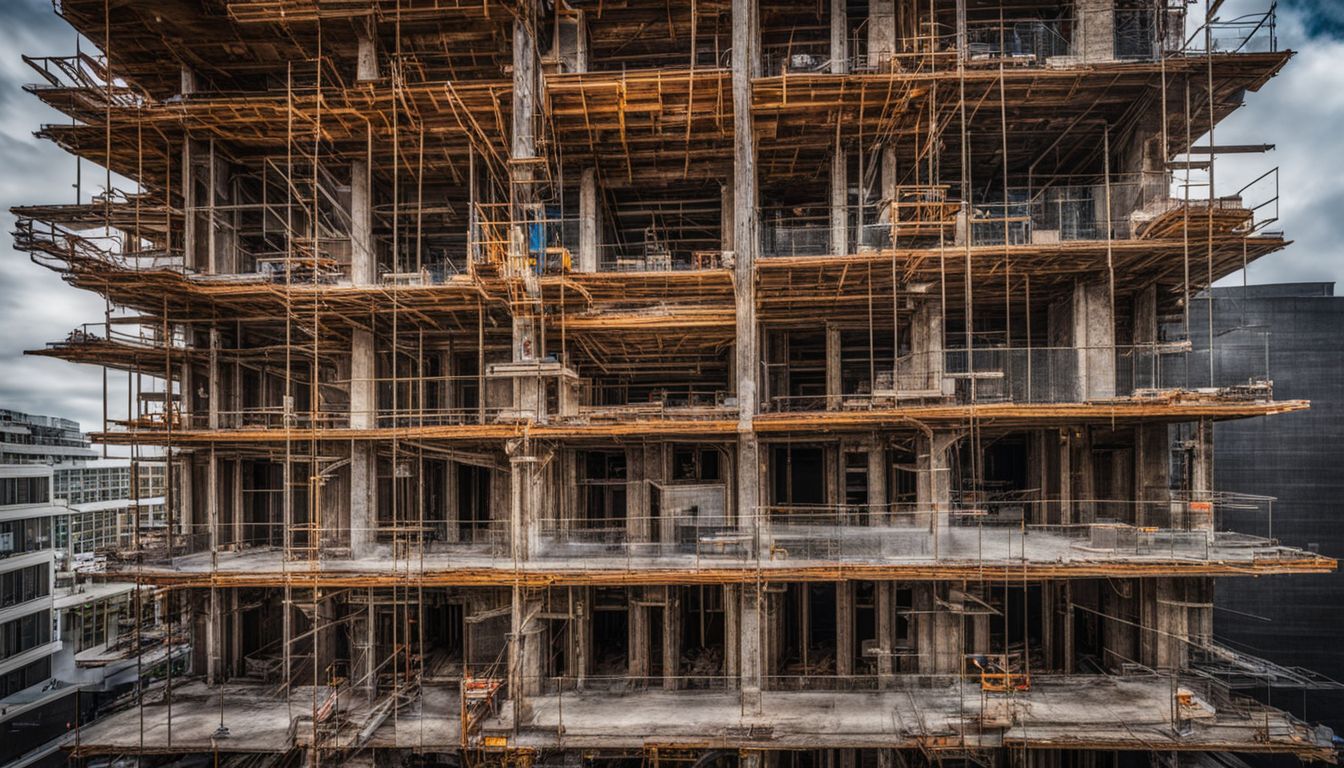
Let’s delve into the realm of advanced formwork systems, which are tailored to enhance modern construction projects. These systems utilise innovative techniques and materials, providing benefits such as improved efficiency, reduced labour costs, and enhanced safety.
Advanced formwork systems also offer increased flexibility in design, enabling architects and engineers to push the boundaries of structural possibilities while maintaining sustainability goals.
With sustainable construction at the forefront of modern architectural practices, these advanced formwork systems play a pivotal role in not only supporting but also driving sustainable building techniques.
Benefits and Challenges of Modern Formwork Systems
As we discuss the advanced formwork systems, it becomes essential to explore the benefits and challenges associated with these modern solutions. Modern formwork systems have significantly transformed how concrete structures are built, offering efficiency and adaptability. Our focus now shifts to understanding the advantages and obstacles that these systems present to businessowners and homeowners alike.
| Benefits of Modern Formwork Systems | Challenges of Modern Formwork Systems |
|---|---|
| Speeds up construction processes. | Higher initial investment compared to traditional formwork. |
| Enhances architectural flexibility and creativity. | Requires specialised knowledge for effective use. |
| Improves safety on construction sites. | May face logistical challenges in transport and storage. |
| Reduces waste, supporting sustainable construction practices. | Limited reusability for highly unique structural designs. |
| High-quality finishes reduce the need for subsequent rectification work. | Adapting to rapidly changing construction technologies can be challenging. |
These aspects highlight the dual nature of modern formwork systems in construction. They simultaneously offer groundbreaking potential for efficiency, safety, and design innovation while presenting financial and technical challenges that must be navigated carefully. Businessowners and homeowners engaging with modern construction projects must weigh these factors to make informed decisions that align with their objectives and resources.
Formwork and Sustainable Construction
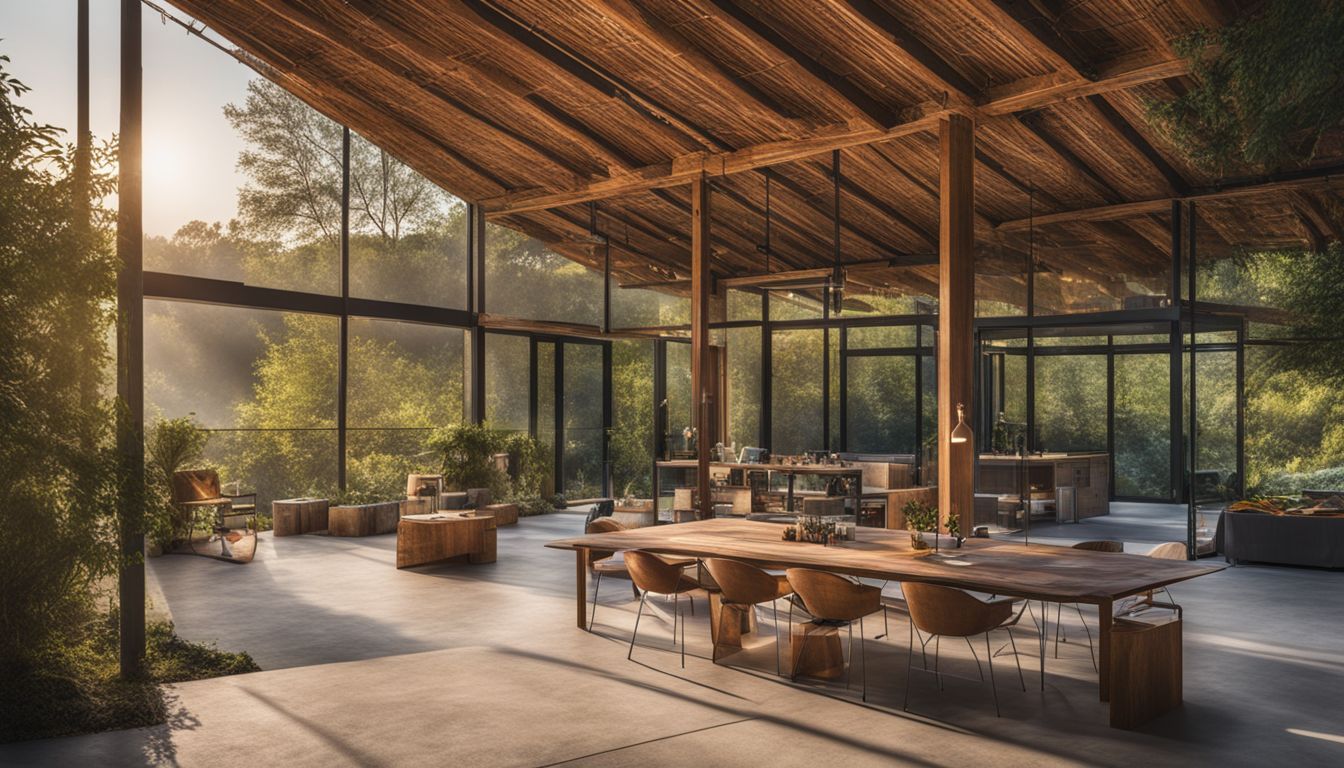
Formwork plays a vital role in sustainable construction, addressing environmental impact and resource conservation. It enables the use of eco-friendly materials and practices, promoting sustainability in building structures.
Sustainability Implications of Formwork
Sustainable formwork plays a crucial role in reducing the environmental impact of construction. Utilising eco-friendly materials and efficient formwork systems can minimise waste, energy consumption, and carbon emissions.
In addition to this, implementing reusable formwork solutions can significantly lower construction costs while promoting sustainable building practices. Embracing sustainable formwork not only benefits the environment but also contributes to creating long-lasting, energy-efficient structures that align with modern sustainability standards.
Innovations in sustainable formwork systems have led to advancements that address environmental concerns without compromising structural integrity. These innovations include bio-based or recycled materials and modular designs that promote reusability.
Innovations in Sustainable Formwork Systems
In the wake of exploring the sustainability implications of formwork, let’s delve into innovations in sustainable formwork systems:
- Engineered Timber Formwork: Timber is a renewable material that is being harnessed for formwork systems, reducing the reliance on traditional materials.
- Recycled Plastic Formwork: Utilising recycled plastic for formwork not only reduces waste but also minimises the use of non-renewable resources.
- Modular Aluminium Formwork: This system enables flexibility in construction and can be reused multiple times, decreasing material consumption.
- Bio-based Formwork Materials: Innovations in bio-based materials for formwork are contributing to sustainable construction practices.
- Digital Fabrication of Formwork: The integration of digital technologies streamlines production processes and minimises material wastage.
These sustainable innovations in formwork systems demonstrate a shift towards environmentally conscious construction practices while maintaining structural integrity and efficiency.
Future Trends in Formwork Technology

Future formwork technology advancements are shaping the construction industry. The impact of these advancements on architecture and building techniques is significant.
Potential Technological Advancements in Formwork
Advancements in formwork technology are shaping the future of construction, enabling more efficient and sustainable building processes. These innovations are set to revolutionise construction practices, bringing a range of benefits for both contractors and homeowners alike:
- 3D Printing: This cutting-edge technology allows for the direct printing of concrete forms, offering greater flexibility in design and reducing material waste.
- Self-Compacting Concrete: Advanced concrete mixes can now flow effortlessly into intricate formwork designs without the need for excessive vibration, saving time and labour costs.
- Smart Formwork Systems: Integration with IoT technology facilitates real-time monitoring of formwork conditions, ensuring optimal performance and safety on-site.
- Prefabricated Modular Formwork: Engineered off-site to exact specifications, modular formwork systems streamline construction processes while minimising material wastage.
- Green Materials: The development of eco-friendly formwork materials such as recycled plastic or sustainable timber offers environmentally conscious solutions for construction projects.
- Robotic Automation: Robotic arms equipped with precise formwork placement capabilities improve accuracy and speed up assembly on construction sites.
As these technological advancements continue to evolve, they will play a pivotal role in transforming the landscape of modern architecture and construction practices.
Impact of Future Trends on Construction and Architecture
As we look ahead to the future, it’s evident that potential technological advancements in formwork will significantly impact construction and architecture. These advancements could revolutionise the way buildings are constructed and designed, influencing everything from materials used to building techniques.
The integration of advanced formwork systems may lead to more sustainable architectural designs, innovative building techniques, and structures tailored towards meeting ever-evolving housing development needs while underpinning sustainability implications.
Such advancements not only unlock the secrets of cutting-edge construction technology but also unveil new possibilities for creating robust yet sustainable high-rise buildings and housing developments.
Conclusion

In summary, formwork plays a pivotal role in modern architecture and construction. Our strategies emphasise practicality, efficiency, and sustainability throughout the realm of engineering.
The importance and impact of these approaches cannot be overstated – they underpin not only the success of projects but also sustainable development. For further guidance, exploring advanced formwork systems is advisable for anyone embarking on high-rise or housing developments.
Let this knowledge inspire you to elevate your architectural designs with innovative formwork solutions tailored towards efficiency and sustainability.
Discover how Maitland’s formwork expertise has revolutionised high-rise construction by navigating through complex builds here.
